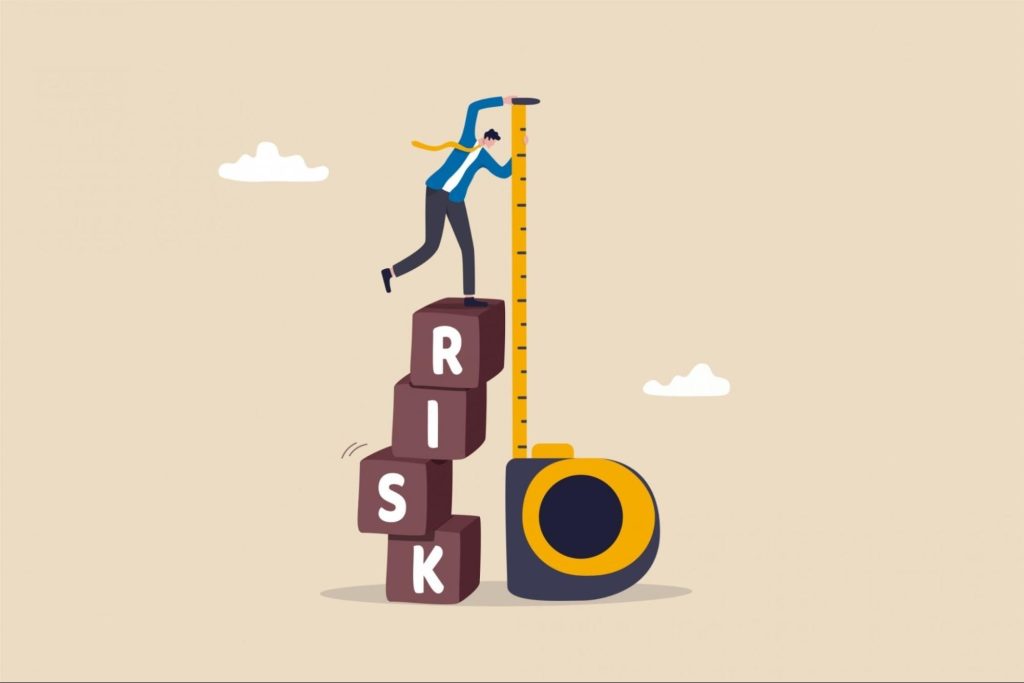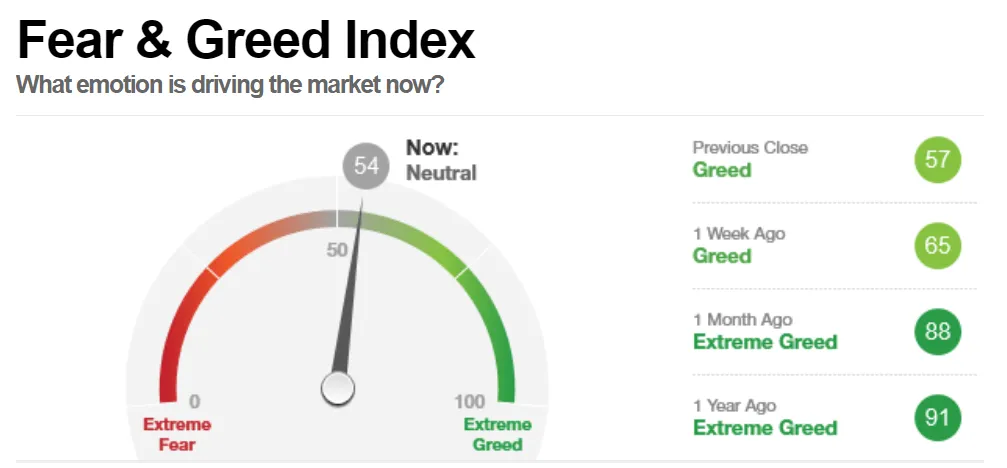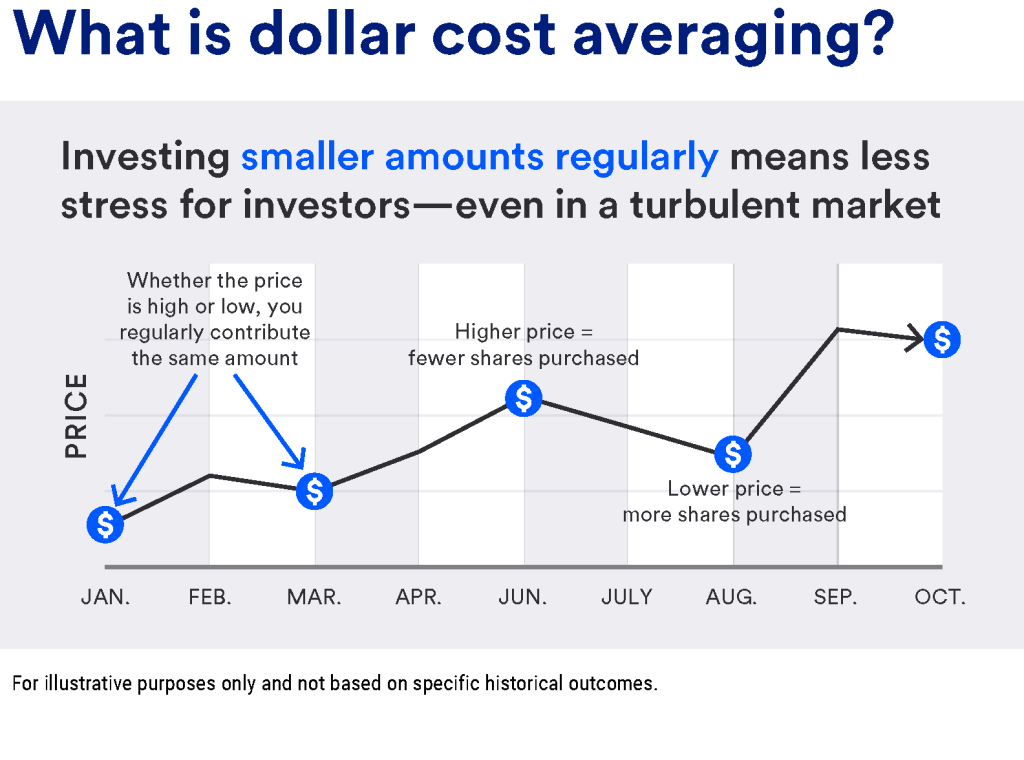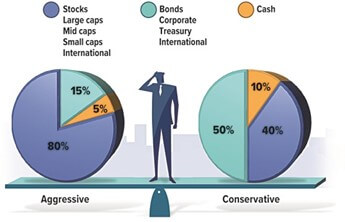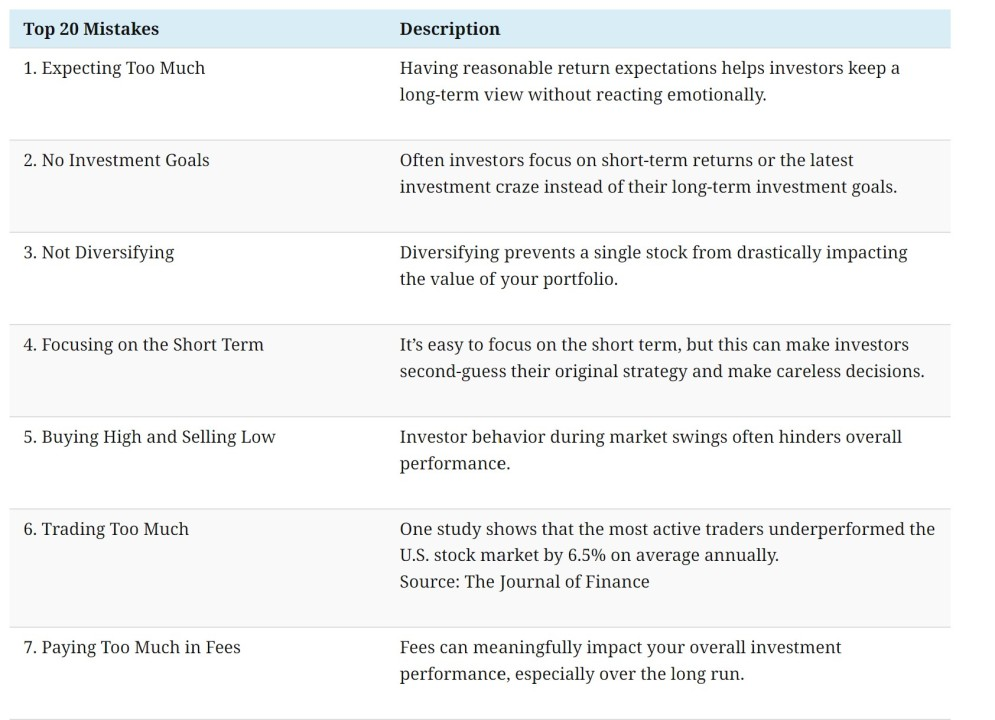Global: Zrozum swoją tolerancję ryzyka
Cele lekcji:
- Assess Your Risk Tolerance: Learn how to evaluate your comfort with risk based on your goals, age, income, and time horizon so you can choose investments that match your personal situation.
- Apply Diversification and Rebalancing: Understand how to spread your investments across sectors, regions, and asset types to reduce risk and how rebalancing keeps your portfolio aligned with your goals over time.
- Use Tools to Manage Risk:Dowiedz się jak stop-loss orders, dollar-cost averaging, I cash reserves help manage uncertainty and prevent emotional decisions during market swings.
- Build a Strong Investment Plan: Develop a clear investment strategy with defined goals, timeframes, and asset allocations that guide your decisions and support long-term success.
- Recognize and Learn from Mistakes: Identify common investment errors I behavioral biases that affect decision-making and learn how to adjust your approach based on past experiences.
A. Understand Your Risk Tolerance
Before building a stock portfolio, it’s crucial to evaluate your tolerancja ryzyka—your ability and willingness to endure volatility and potential losses. Factors such as your investment goals, time horizon, income, and emotional resilience all play a role in determining how much risk you can handle. For example, younger investors with a long-term time horizon may have a higher risk tolerance, allowing them to invest more aggressively in stocks, while those nearing retirement may prefer a more conservative approach with lower volatility.
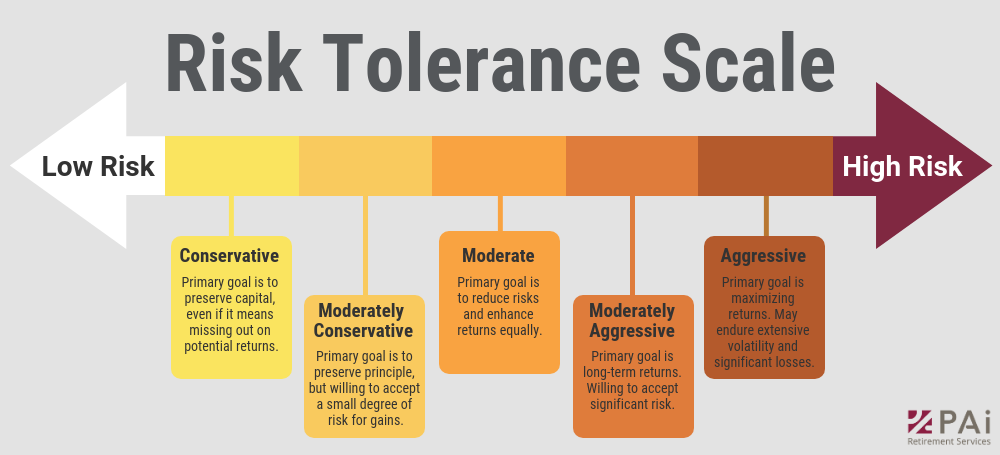
Figure: Risk Tolerance Scale & Portfolio Types
Opis:
This chart illustrates a risk tolerance scale ranging from low risk Do high risk, classifying investors based on their willingness to accept different levels of risk. The categories are: Conservative, Moderately Conservative, Moderate, Moderately Aggressive, I Aggressive. Each category describes the investor’s primary goal, with Conservative focusing on preserving capital even at the expense of missing returns, while Aggressive aims for maximum returns, tolerating significant volatility. The categories in between represent varying degrees of balance between risk and return expectations.
Najważniejsze wnioski:
- Conservative investors prioritize preserving capital, accepting lower returns.
- Moderately Conservative investors are willing to take on a small amount of risk for potential gains.
- Moderate investors balance reducing risks and enhancing returns.
- Moderately Aggressive investors aim for long-term returns, tolerating higher risks.
- Aggressive investors target maximum returns, accepting significant volatility and potential losses.
Zastosowanie informacji:
Zrozumienie risk tolerance scale helps investors determine the best investment strategy based on their risk appetite. It allows them to align their financial goals with suitable investments, ensuring they can handle potential market volatility while pursuing returns that match their risk preference. For learners, this scale emphasizes the importance of assessing one’s risk capacity before making investment decisions.
B. Diversify Your Portfolio
Dywersyfikacja is a key risk management strategy that spreads your investments across different asset classes, sectors, and regions. By holding a variety of stocks, you reduce the impact of any single stock or sector performing poorly. For example, while one sector like technologia might experience a downturn, others like opieka zdrowotna Lub consumer staples could remain stable or grow, balancing out the overall portfolio.
- Diversify across industries (e.g., tech, financials, healthcare).
- Include both domestic and international stocks.
- Consider adding bonds or other asset classes to reduce risk.
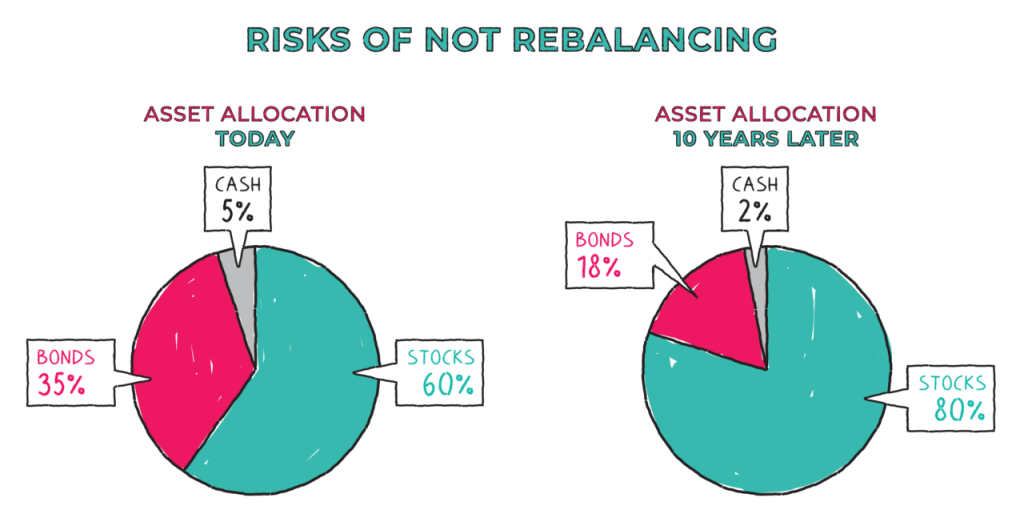
Postać: Importance of Rebalancing in Maintaining Portfolio Allocation
Opis:
This figure demonstrates the potential changes in alokacja aktywów over time if a portfolio is not regularly rebalanced. On the left, the initial allocation consists of 60% stocks, 35% bonds, I 5% cash. After 10 years, the right chart shows a shift in the allocation due to market fluctuations: dyby have increased to 80%, chwila obligacje have reduced to 18%, I gotówka has dropped to 2%. This shift illustrates how dyby can grow disproportionately in an unrebalanced portfolio, increasing exposure to market volatility.
Najważniejsze wnioski:
- Rebalancing helps maintain the desired risk level of an investment portfolio.
- Without rebalancing, stock allocations can grow excessively, increasing the portfolio’s ryzyko.
- An unrebalanced portfolio may deviate from the investor’s original strategy over time.
- Obligacje I gotówka proportions can shrink significantly, reducing the portfolio’s stability.
Zastosowanie informacji:
Investors should understand the importance of regular rebalancing to maintain a diversified portfolio that aligns with their tolerancja ryzyka and financial goals. By rebalancing, investors can manage ryzyko more effectively and ensure that their portfolio remains aligned with their long-term strategy, protecting against market fluctuations that could otherwise shift their allocation.
C. Regularly Review Your Portfolio
Market conditions and company performance can change, so it’s important to regularly review your portfolio to ensure it remains aligned with your goals and risk tolerance. Regular reviews allow you to spot underperforming assets or adjust allocations as needed. For example, if one sector becomes overweight due to high returns, you may need to rebalance by selling some assets and reallocating to other sectors.
D. Use Stop-Loss Orders
Stop-loss orders automatically sell a stock when its price falls to a pre-set level, helping investors limit losses during market downturns. This tool is especially useful for managing risk in volatile markets, preventing significant losses from occurring in a short period. Setting stop-loss orders at an appropriate level can protect profits and minimize downside risk without requiring constant monitoring.
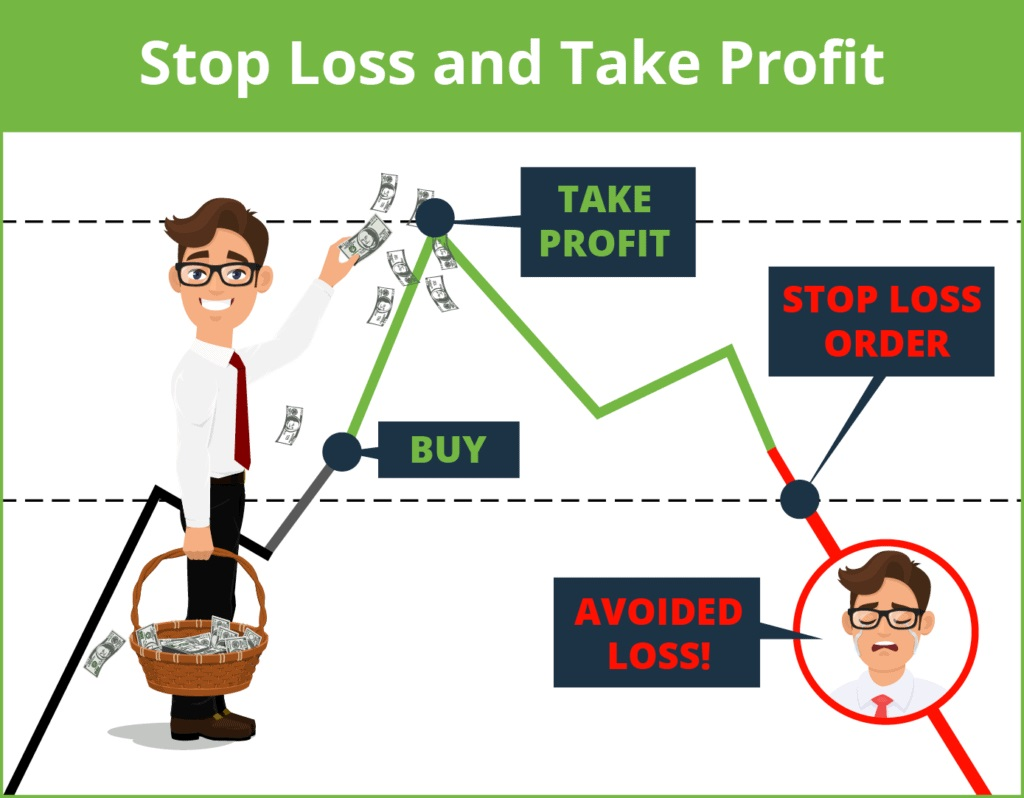
Postać: Visual Explanation of Take Profit and Stop Loss Orders
Opis:
This image illustrates the concepts of Stop Loss I Take Profit in trading. It shows a trader purchasing an asset at the buy point, with two set levels: one for taking profits and one for limiting potential losses. The take profit level is where the trader secures gains, while the stop loss order helps prevent further losses if the price drops. The graphic also demonstrates a scenario of an avoided loss, emphasizing how stop loss protects against significant market declines.
Najważniejsze wnioski:
- Stop loss helps protect investments by selling assets when they reach a predefined loss level.
- Take profit locks in gains by selling assets when they reach a predetermined profit level.
- Both tools are vital in zarządzanie ryzykiem, helping traders maintain control over their investments.
- They can prevent excessive emotional decision-making in volatile markets.
Zastosowanie informacji:
Investors and traders can use stop loss I take profit strategies to manage risk effectively and ensure that gains are captured while potential losses are minimized. These tools are especially useful for discipline in trading, as they allow for systematic decision-making, reducing the impact of emotional reactions to market movements.
E. Understand the Companies You Invest In
Investing in stocks requires a deep understanding of the companies behind them. Researching financial statements, earnings reports, I trendy rynkowe gives you insight into the health and future prospects of a company. Companies with strong fundamentals, such as solid revenue growth, profitability, and competitive advantages, are more likely to weather market volatility than those with weak financials.
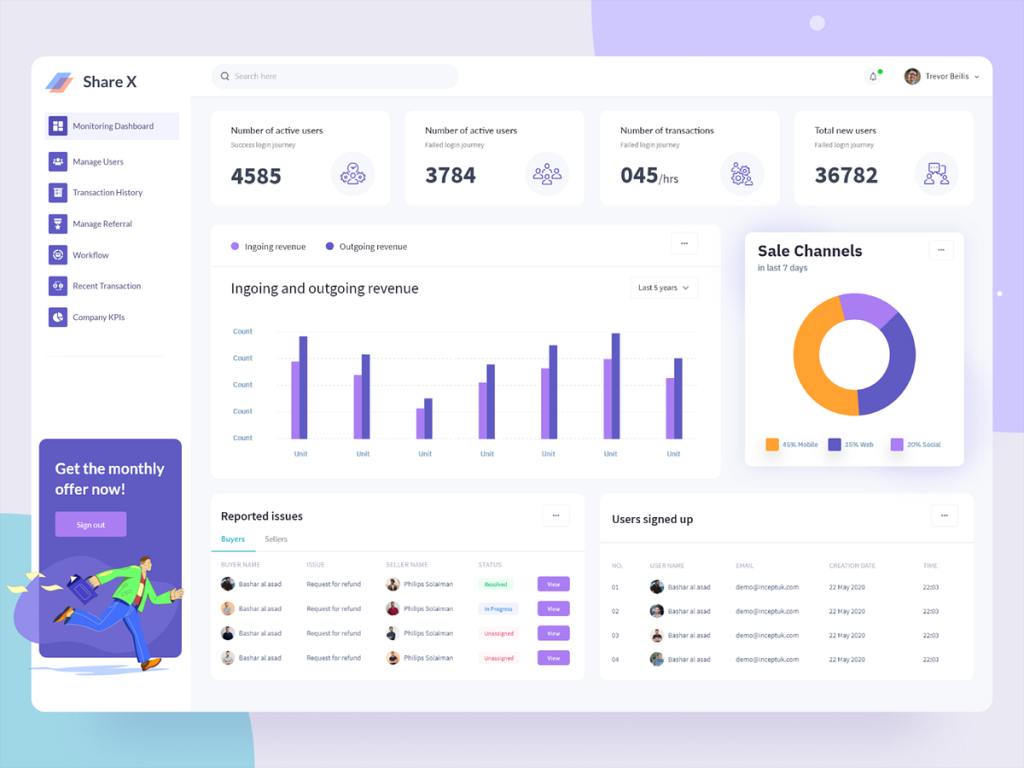
Postać: Stock Analysis Dashboard
Opis:
This image shows a stock analysis dashboard designed to provide an overview of user activity, transaction details, revenue data, and sales channels. It features metrics like the number of active users, both successful and failed login attempts, number of transactions, I total new users over a specific period. The dashboard also displays bar graphs for incoming and outgoing revenue trends over the last 5 years, a pie chart for sales channels distribution, a list of reported issues, I user signup details, making it easy to understand ongoing performance and activity.
Najważniejsze wnioski:
- Provides a comprehensive overview of user activity and financial transactions.
- Visual elements like graphs I charts aid in quickly understanding trends.
- The dashboard consolidates key metrics, making it easy to monitor performance.
- Useful for tracking both revenue trends I user engagement.
Zastosowanie informacji:
This type of dashboard can be valuable for portfolio managers, analysts, Lub business managers to track performance and user interactions effectively. By visualizing key metrics, users can identify trends, address issues promptly, and optimize strategie inwestycyjne based on real-time data. This tool helps maintain clarity I control over investment decisions and operational processes.
F. Keep Emotions in Check
Emotions can cloud judgment and lead to irrational decisions, such as panic selling during market downturns or buying into market hype. Successful investors remain disciplined and stick to their strategy, even in volatile markets. Practicing emotional control can prevent fear and greed from driving investment choices and help maintain a long-term perspective.
Postać: Fear & Greed Index
Opis:
Ten Fear & Greed Index is a gauge designed to measure the prevailing market sentiment. It ranges from 0 to 100, with 0 indicating “Extreme Fear” and 100 indicating “Extreme Greed.” The index currently reads 54, signifying a “Neutral” sentiment. The sidebar on the right provides comparative data: the previous close was 57 (Greed), 1 week ago was 65 (Greed), 1 month ago was 88 (Extreme Greed), and 1 year ago was 91 (Extreme Greed). This index helps visualize investor emotions and their potential impact on the market.
Najważniejsze wnioski:
- The index provides a quantifiable measure of market sentiment, ranging from fear to greed.
- Current reading indicates a Neutral sentiment, suggesting neither extreme fear nor greed.
- Comparison over time reveals changes in sentiment, indicating trends in market behavior.
- It helps investors understand how emotions influence market conditions.
Zastosowanie informacji:
Investors can use the Fear & Greed Index to assess the emotional state of the market and make informed decisions. A high index reading suggests potential overvaluation due to excessive optimism, while a low reading indicates possible undervaluation driven by fear. By monitoring these changes, investors can better time their entry and exit points, manage risks, and maintain a balanced perspective in both bullish and bearish markets.
G. Have a Clear Investment Plan
A well-defined investment plan helps guide your decisions and provides structure for building and managing your portfolio. Your plan should include:
- Investment goals: Short-term and long-term.
- Risk tolerance: How much risk you’re willing to take.
- Time horizon: How long you plan to invest.
- Asset allocation strategy: How you will diversify your portfolio.
- Review schedule: How often you’ll evaluate your portfolio.
Having a clear plan reduces the likelihood of making impulsive decisions and keeps your strategy on track.
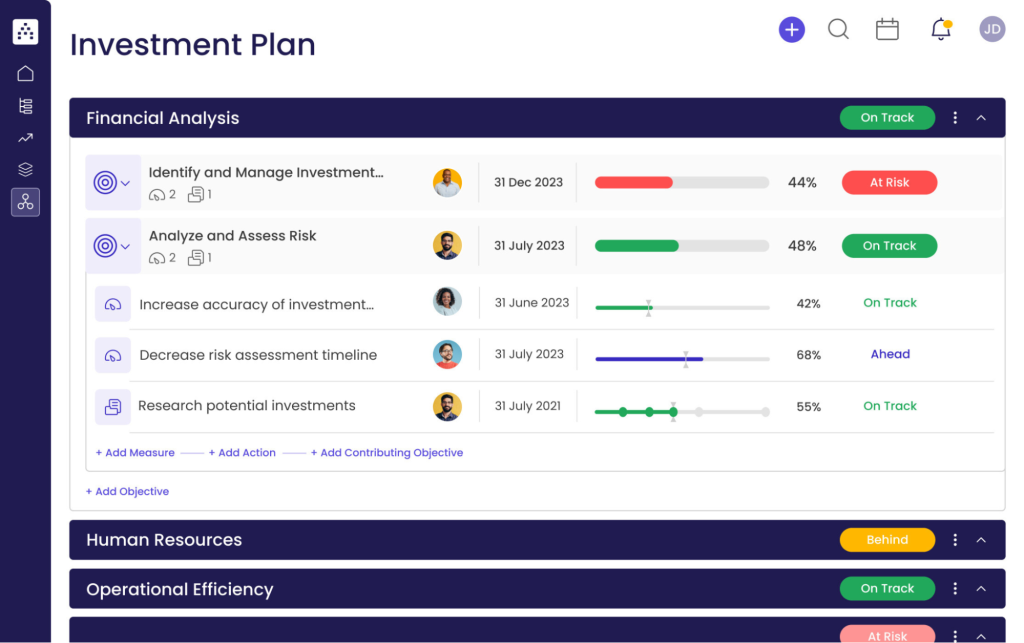
Postać: Investment Plan Dashboard
Opis:
Ten Investment Plan Dashboard is a visual tool designed to help users track various financial goals and their progress. It includes different objectives under the “Financial Analysis” section, such as managing investments, analyzing risks, increasing accuracy in assessments, and researching investments. Each objective is accompanied by completion percentages, target dates, responsible individuals, and status indicators like “On Track,” “At Risk,” or “Ahead.” The dashboard also has sections for “Human Resources” and “Operational Efficiency,” allowing users to manage different aspects of an investment strategy.
Najważniejsze wnioski:
- The dashboard provides a clear overview of investment goals and their progress.
- It includes performance indicators such as “On Track,” “At Risk,” and “Ahead,” helping users prioritize efforts.
- The interface allows for individual accountability, with specific tasks assigned to different users.
- It integrates timelines and deadlines for each objective, ensuring structured progress.
Zastosowanie informacji:
This dashboard can be used by investors and project managers to effectively track, measure, and manage investment objectives. It provides insights into which areas require attention and which are performing well. By using such a dashboard, users can stay organized, make informed decisions, and ensure that investment plans align with financial goals. It is particularly useful for maintaining focus, delegating tasks, and enhancing overall financial management.
H. Implement Dollar-Cost Averaging
Dollar-cost averaging (DCA) is an investment strategy where you invest a fixed amount of money at regular intervals, regardless of market conditions. This approach reduces the risk of investing a large sum at the wrong time and helps smooth out market volatility. Over time, dollar-cost averaging can lower the average cost per share, especially during market downturns.
Postać: The Concept of Dollar Cost Averaging
Opis:
The figure illustrates the concept of Dollar Cost Averaging (DCA), an investment strategy where an investor contributes a fixed amount regularly, regardless of the asset’s price fluctuations. The graph shows a fluctuating asset price from January to October, demonstrating how an investor buys fewer shares when prices are high and more shares when prices are low. This approach helps reduce the impact of market volatility over time.
Najważniejsze wnioski:
- Dollar Cost Averaging involves investing fixed amounts at regular intervals.
- It allows investors to buy more shares at lower prices I fewer shares at higher prices, potentially lowering the average cost per share.
- This strategy can help reduce the emotional stress of investing, especially in volatile markets.
- DCA can be effective in mitigating market risk over time, especially for long-term investors.
Zastosowanie informacji:
Investors can use Dollar Cost Averaging to build their investment portfolio steadily, without trying to time the market. This approach can be particularly useful during periods of high market volatility, helping investors maintain a disciplined investing strategy. By committing to a fixed investment amount regularly, investors can benefit from potential price dips, ultimately averaging out the purchase cost and enhancing the potential for returns over the long term.
I. Keep Some Cash Reserves
Maintaining cash reserves in your portfolio provides flexibility and reduces risk. Cash offers a safety net during market volatility, allowing you to take advantage of buying opportunities without needing to sell other investments at a loss. It also provides liquidity for unexpected expenses, helping you avoid selling stocks during downturns when prices are low.
Postać: Aggressive vs. Conservative Investment Strategies
Opis:
The figure compares two different investment strategies—Aggressive I Conservative. The aggressive strategy allocates 80% to dyby (large caps, mid caps, small caps, and international), 15% to obligacje (corporate, treasury, international), and 5% to gotówka. In contrast, the conservative strategy dedicates 50% to obligacje, 40% to dyby, and 10% to gotówka. The image uses a balance scale to symbolize the risk and reward balance, with the aggressive strategy showing a heavier stock weighting, indicating a higher risk but potential for higher returns, while the conservative strategy emphasizes stability and lower risk.
Najważniejsze wnioski:
- Aggressive strategies allocate a higher proportion to dyby, aiming for wyższe zwroty but carrying more ryzyko.
- Conservative strategies focus more on obligacje I gotówka, aiming for lower risk I steady income.
- The choice between aggressive and conservative approaches depends on an investor’s tolerancja ryzyka, investment goals, I time horizon.
- Diversifying across dyby, obligacje, I gotówka helps manage risks and aligns investments with individual goals.
Zastosowanie informacji:
Investors can use this information to determine the most suitable asset allocation based on their risk appetite, financial goals, I investment duration. Those seeking higher growth and who can tolerate market fluctuations might lean toward an aggressive strategy, while those aiming for capital preservation might prefer a conservative approach. Understanding these strategies helps investors align their portfolios with their financial needs and risk preferences.
J. Learn from Your Mistakes
Investing is a learning process, and mistakes are inevitable. The key is to learn from your mistakes and avoid repeating them. Whether it’s overreacting to market volatility, failing to diversify, or holding onto a losing investment too long, reflecting on past decisions helps improve future investment choices. Acknowledge what went wrong, adjust your strategy, and use the experience to become a more disciplined and informed investor.
Postać: Top 20 Investment Mistakes and Descriptions
Opis:
The figure lists seven of the most common investment mistakes, along with brief descriptions. These mistakes range from having unrealistic return expectations and focusing too much on short-term results to failing to diversify and paying excessive fees. Each description explains the impact of these mistakes on investors’ long-term performance and decision-making, emphasizing the importance of setting clear goals, maintaining discipline, and being aware of trading costs and strategies.
Najważniejsze wnioski:
- Expecting Too Much: Overly optimistic expectations can lead to emotional reactions; realistic goals help maintain a long-term perspective.
- No Investment Goals: Lacking clear, long-term objectives can lead to impulsive decisions driven by short-term trends.
- Not Diversifying: Concentrating investments increases the risk of significant losses; diversification spreads risk.
- Focusing on the Short Term: A short-term focus can lead to second-guessing strategies and poor decisions.
- Buying High and Selling Low: Emotional responses during market swings often result in poor timing and losses.
- Trading Too Much: High trading activity typically results in underperformance compared to the broader market.
- Paying Too Much in Fees: High fees can significantly reduce overall returns over time.
Zastosowanie informacji:
Investors can use this information to avoid common pitfalls by setting clear investment goals, diversifying portfolios, and keeping a long-term focus. Understanding the impact of opłaty I trading frequency can also help in making cost-effective decisions that enhance overall returns. Awareness of these mistakes can help investors build more robust strategies and improve financial outcomes.
Wniosek
Building a stock portfolio requires a thoughtful approach to managing risk. Understanding your tolerancja ryzyka, praktykujący dywersyfikacja, and regularly reviewing your investments are essential to maintaining a healthy portfolio. Using tools like stop-loss orders, dollar-cost averaging, and keeping emotions in check can further enhance your ability to navigate market volatility. A well-executed investment plan, supported by continuous learning, ensures that your portfolio aligns with your financial goals while minimizing unnecessary risks.
Najważniejsze informacje dotyczące lekcji:
- Understanding your risk tolerance is essential for selecting suitable investments. Conservative investors may prioritize capital preservation, while aggressive investors accept more volatility in exchange for higher potential returns.
- Diversification reduces risk by spreading investments across industries, regions, and asset types. It ensures that a poor performance in one area doesn’t heavily impact the entire portfolio, especially during market downturns.
- Rebalancing is necessary to maintain your original investment strategy. Over time, stock values can grow faster than bonds or cash, shifting your portfolio’s risk level and requiring adjustments to stay on track.
- Stop-loss and take-profit orders help automate discipline, selling assets when they reach certain loss or gain levels. These tools protect against unexpected drops and help lock in profits during market gains.
- Regularly reviewing your portfolio keeps it aligned with your financial goals. This process helps identify underperforming assets or sectors that are overweight and ensures ongoing risk management.
- Researching the companies you invest in is key. Understanding a company’s financial health, revenue trends, I market performance helps you make informed decisions and avoid weak or overhyped stocks.
Oświadczenie końcowe:
A strong portfolio is built on clear goals, smart risk management, and ongoing learning. With the right strategy and mindset, investors can stay on track, grow their wealth over time, and become more confident in their financial decisions.

